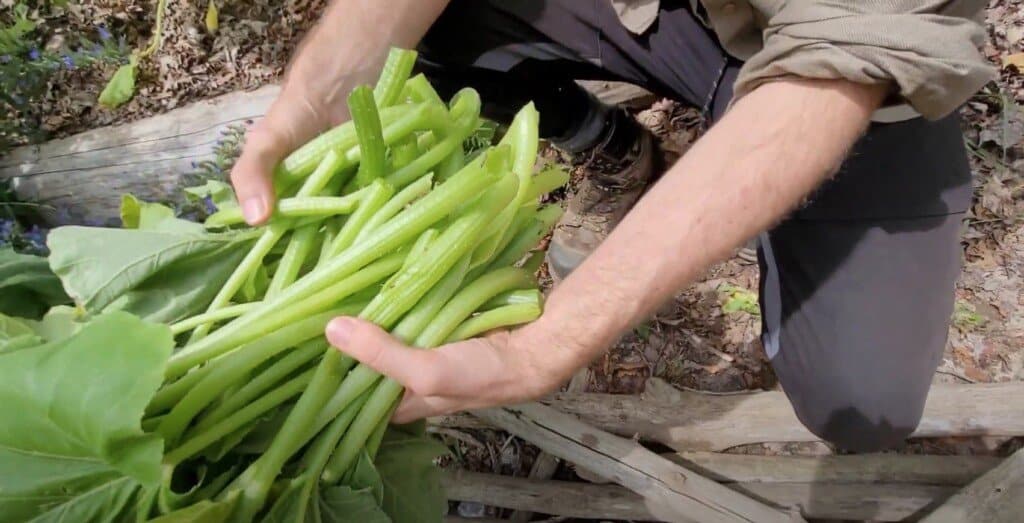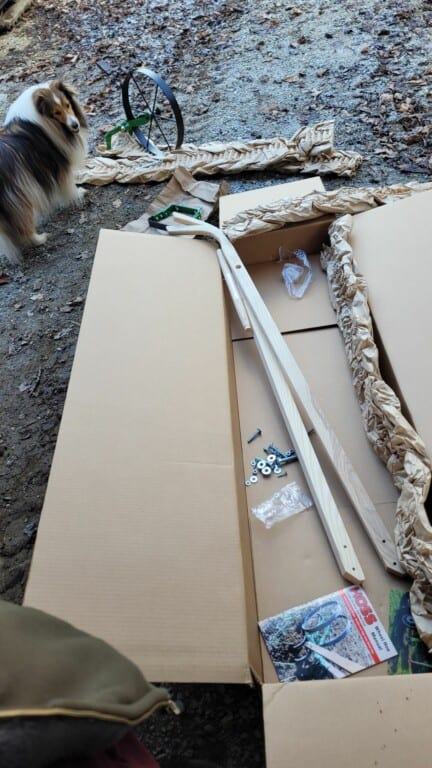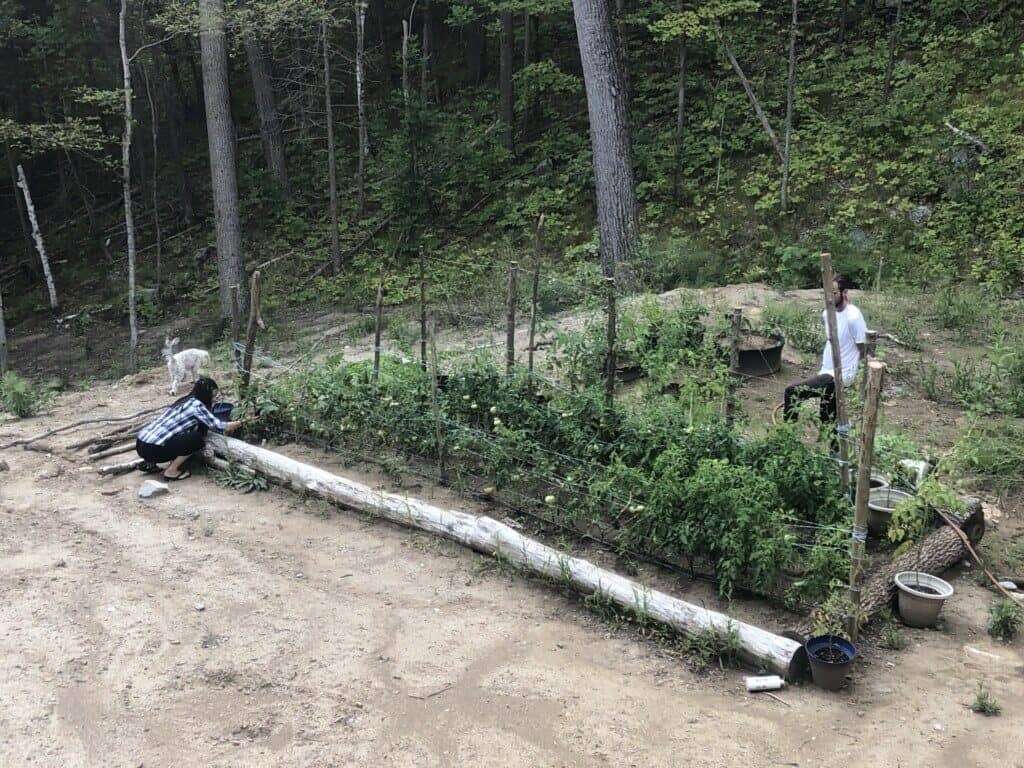This post may contain affiliate links. If you use these links to buy something we may earn a commission. Thanks.
Your current community garden could be unsustainable in a number of ways. There are items, practices, and products that make or break the sustainability of a garden in general. How can you make your community garden sustainable?
A community garden is sustainable when its design includes the ability to regenerate. Community composting techniques can produce great yields and eliminate the need to import fertility. All members will need to be on the same page to execute a practical community garden fertility plan.
Regeneration:
The action or process of regenerating or being regenerated, in particular the formation of new animal or plant tissue.
Oxford Languages
When individual community garden members have to buy their own inputs like compost, fertilizers, or pesticides, it’s not a sustainable community garden. Any source of fertility that is purchased from somewhere else depletes other areas of the world in order to feed our own.
What happens when we deplete the resources around us and our current go-to’s are no longer an option?
Well, this is why we must implement regenerative compost systems in community gardens, today.
To make the right changes we can recognize that any damage to the planet is an attack on ourselves as part of a whole organism.
Related post: 7 ways community gardens make your life more sustainable
There is nothing dead in Nature. Everything is organic and living, and therefore the whole world appears to be a living organism.
Lucius Annaeus Seneca
In your community garden rules; allow no outside imports to be used after successfully implementing a few of the following systems.
Below, we talk about what to include in your sustainable community garden, the benefits of including these elements, and ways they could be implemented.
Regenerative Community Garden Design (9 Elements)
The upfront work of a regenerative garden design can feel more costly than non-regenerative systems. However, in the long run, savings for everyone is the outcome.
The investment your community makes now means you are not forever reliant on purchasing fertility.
Anytime you harvest from an unsustainable garden you create a debt to it. It’s a situation where you then require outside sources to supply you with a refill.
With non-regenerative garden methods, we must “forever” purchase inputs as we need them to feed the plants in the given soil or dirt. Since we must rely on imported goods to keep plants healthy and growing, it is by definition, not regenerative.
Gardens that aren’t regenerative, aren’t sustainable. Plants, especially annuals are consumers, every time we consume the plants there is a loss from the system. So how can we make up for what we take out?
Using the natural resources provided by the earth, simply to let more plants grow.

The goal is to eliminate the need for a community garden or for members to import their own means of fertility by doing the work to make your own!
Community garden cover cropping (2 ways)
Regenerative community gardens benefit from soil coverage. A great way to achieve this without needing mulch is living mulch!
Cover crops are grown to protect the soil from the elements and enrich the soil with a return.
Many plants can be used for this purpose. Typically legumes, grasses, buckwheat, vetch, or any fast-growing plant like radishes.
You can use these plants as companions to your main vegetable crops for soil coverage and weed suppression between vegetables. Additionally, cover crops can be planted in later summer after crops are harvested such as spring brassicas or garlic.
Using nitrogen fixers can be ideal for cover cropping because as we know, plants are consumers. So it’s in our best interest to plant crops that specifically provide a surplus of nutrients once culled.
Nitrogen-fixing plants accumulate nodules of nitrogen on their root systems. These nodules release bioavailable nitrogen to the soil biology once the plant either dies after its full lifecycle or is killed prematurely.
A common and efficient way to manually kill a cover crop is an oscillating wheel hoe!

You could provide community members the option to use mulch from the pile gathered by the team, or a diagram to show how they can interplant with a cover crop. Provide a list of cover crop options with guidelines on how to manage the cover crop, such as trimming before seed.
If you prefer not to interplant, you may want to mulch with conditioned leaves or straw.
In community garden rules, you can include an option that each member must either seed a cover crop or mulch the soil after placing transplants to ensure timely soil coverage.
For mulching, include guidelines for how much mulch to use in a certain amount of space. Have a designated bucket by the mulch pile for consistent use of the guidelines.
Stock up on a couple of years’ worth of leaves. Compost the leaves and replenish them every year in a separate pile so you have year-old leaves available for members each year. You would have 2 piles, one fresh, and one that is a year old for use.
Free sources of fertility (3 places to look)
Overall, dedicating plenty of space to fertility production is the best way to have a sustainable community garden. If you are low on space for doing this or can’t grow your own carbon composting material, the next best option is leaf drives!
Free leaf mulch can be obtained from neighborhoods that rake and bag their leaves each fall. Establish a date for an annual drive where members commune to gather bags to bring back to the community garden for composting.
Secondly, all community members can save and bring their kitchen scraps to the community garden every time they visit, especially if they are scraps from what was grown!

Third, you might be in an area where chip drop can offer you free wood mulch!
Community garden green manure patch (several crop combos)
Additionally or alternatively to cover cropping, the community can grow a large patch of green manure. Either on the side of your main community garden space or by rotating beds annually to replenish fertility.
Green manure is a crop that you grow for the purpose of building compost for your soil. The more you grow the greater the size of the compost! Everyone can contribute to this pile with the vegetable scraps from the garden too.
In a single year, you could dedicate a quarter of the community garden space to green manure, a quarter to mixed flowers for pollinators, and a half to vegetables. Then rotate on a quarterly spin each year. This works for those who like to grow food with less intercropping.
There are a couple of ways the community could work together or volunteers can benefit.
The easier green manure patch would consist of perennial greens and grasses where they are planted once and chop, chop forever. The community could gather to prepare and plant this space then it is finished and ready for use after a season or two of the establishment.
A comfrey patch is the best green manure I know of in terms of volume, nutrient composition, and frequency it can be harvested.
When growing annual green manure, a volunteer or two can offer to prepare and seed an annual cover crop section for the benefit of extra plot space at no additional cost to them.
Buckwheat is a great choice for this, but I love the benefits of their flowers, so I like growing buckwheat as a pollinator friend myself.
Legumes are a great choice and they can include vetch, clover, beans, or peas
Grasses to use could be annual ryegrass, oats, rapeseed, or winter rye
It’s a common practice to grow both legumes and grasses together. The logic here is to balance the carbon-to-nitrogen ratio in the soil after crop termination.
The legumes are rich in nitrogen which composts well with a carbon source. Grasses are rich with carbon and so they break down quicker when together rather than separately. Just like a compost pile, the nitrogen-rich source feeds off of the carbon energy to break down.
Community garden beneficial flowers (the easy way)
As much as we may be tempted to extract the space for as much food as possible, flowers are a must. It’s the balance of bugs that helps our food thrive and they need flowers to survive!
The easier way to incorporate flowers is to plant perennial herbs and perennial flowers along the outside of the entire community garden plot. If the community garden space is generally large, incorporate more flowers and herbs in more places where suitable.
Mollison’s main criticism of conventional annual based agriculture was that it was not sustainable because nothing about it was permanent.
Bill Mollison is an Australian researcher, author, scientist, teacher and biologist
The best part of planting perennial flowers in your community garden, is they live longer than one year. The time a single flowering plant lives depends individually and can be researched and noted in the plans.
Annual flowers are of course welcome too but will require replanting yearly by the community.
Native flowers encourage native pollinators and predators which preserve the diversity we and our gardens rely on.
In your flower plans, you will want to include plants that flower from early spring all the way until the end of the growing season in your area. Do your research about the best native flowers for your native pollinators and plan for a season-round blooming flower arrangement.
Community garden companion planting (simplified)
Planting more diversely in every section of our garden increases overall resilience.
Diversity is the foundation of a strong life system. Diversifying the way you arrange a wide variety of plants can increase the resilience of your garden. If we look at nature, everything grows in a random assortment! Nothing is naturally in perfect mono-rows; for good reason.
Companion planting is often overwhelming when you want to plant more than two varieties of plants together. All the charts available online show that you can plant, for example, broccoli with a whole bunch of other plants such as beets, onions, and beans. Only to later find out you can’t plant beans with onions or beets!
This problem has been solved with the companion planting matrix!

In moments you can create a polyculture with your annuals while ensuring they are all companion-friendly with each other. This makes planning quick and simple for individuals or communities who might come together to create a plan.
Compost tea (2 types for different plant stages)
This is not tea for your community garden members to share after a day’s hard work! This is a tea you make for your garden to drink!
Nettle tea is high in chlorophyll, Nitrogen, Iron, and Potassium. Nettle tea is best for heavy feeding and leafy plants such as tomatoes, brassicas, squash, cucumbers, and leeks. It is best used for earlier plant stages.
Comfrey tea is best used on more mature heavy-feeding plants. It has a good amount of nitrogen, phosphorus, and potassium to offer.
Comfrey can be impossible to get rid of once it is established due to its deep and extensive root systems. If you plant a comfrey patch for tea making or green manure be sure to get blocking-14 strain as they have sterile seed. Sterile seeds of course cannot reproduce by self-sowing.
The only caution you will want if you care to prevent spread, is by leaving their root systems alone.
Making a comfrey patch is very quick, inexpensive, and easy with just a couple of starter plants because you can easily make new ones with tiny pieces of root from the originals.
The community garden rules and guidelines, provide directions on how to make each tea, how much to use at what dilution, how often to apply it to vegetables, and which type of tea at what time of year.
Heirloom seeds, seed saving, & why learn to use them
Most likely, we will purchase our seeds. If the community isn’t equipped for seed saving or isn’t confident with all of them, there is no harm in utilizing societies of seed growers so we can focus on food.
Heirloom seeds are cultivated varieties that have been passed down over generations. Selected for their best performance, taste qualities, and more.
Using heirloom seeds helps encourage a sustainable community garden because they promote and preserve genetic diversity.
To implement an heirloom community garden, ensure your rules and guidelines include preferred sources for heirloom varieties to help members get what they need.
Row covers for pest prevention (making lives easier!)
Row covers are amazing for growing brassicas and onions. It is my favorite way to prevent several pests without the need for any other intervention.

I find with most other vegetable crops, companion planting and diversity is sufficient for balancing pest issues most of the time.
Physical barriers with multiple seasons of longevity outweigh the use of life-damaging chemical concoctions! Plus the row cover material can be repurposed once its lifespan in the garden is over.
Row covers also allow season extension into fall or earlier planting in spring by using a frost cover. When the weather is hot, you would use a mesh shade cloth that keeps temperatures much nicer for the cool-loving crops.
All you need is a few hoops, the cloth to put on, and rocks for weights to tension the cover.
If the community wants to use row covers in winter, they will want to invest in sturdy hoops such as galvanized steel or PVC piping. If only planning to use shade cloth covers in the summer heat, then using 10-12 gauge wire is sufficient to hold the net afloat.
Community garden alternative or addition
Consider expanding or replacing your community vegetable gardens with perennial food forests!
This article was originally published on foodforestliving.com. If it is now published on any other site, it was done without permission from the copyright owner.
Recent Posts
There’s no shortage of full-sun ground covers for zone 4 climates! Each plant in this list can withstand the frigid temperatures and also enjoy the hot sun in summer. Full sun means that a plant...
There's no shortage of full sun ground covers, not even in zone 3! Zone 3 climates offer hot but short-lived summers and very cold winters. So each plant in this list can withstand the frigid...
